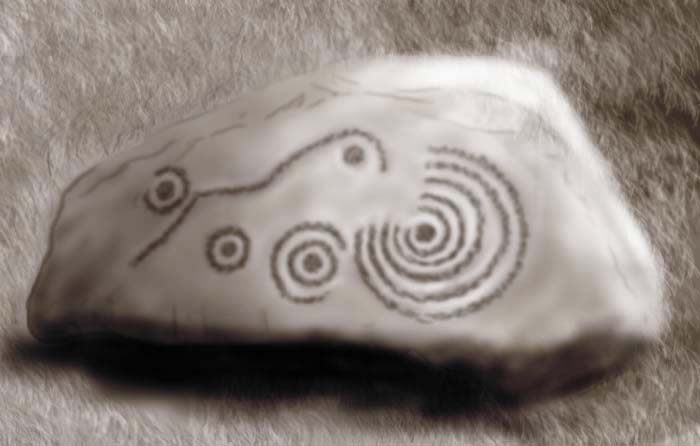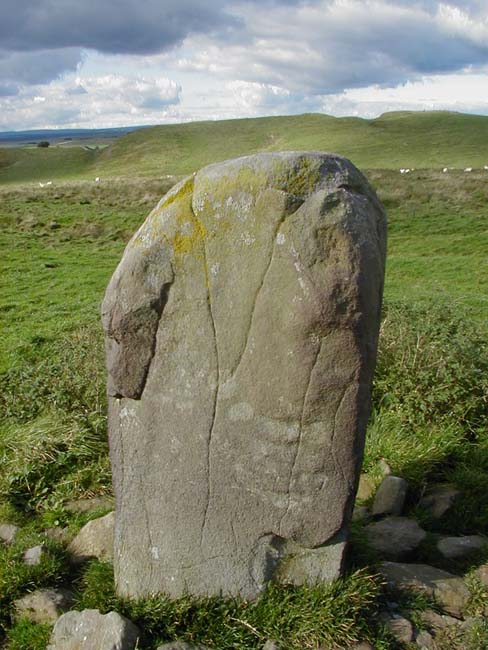Slightly taller than it’s compatriot overlooking Rothbury, but only just. It just has to be a boundary marker for the cairnfield. I guess there may be have been more in the area, maybe there still are.
The cup marked rock, about halfway between the track and the standing stone, has a lovely great enhanced natural bowl. Slightly discordant is the name ‘Fiona’ carved large over one of the cups.
A couple of the cairns have survived quite well, and kerbs are almost complete. I’ve a slight problem with the idea that the others are clearance, and not grave markers, as f they are the result of agricultural clearance, it was a very half-hearted affair. The rest of the field is still littered with stones that would make it a bit hard to plough.
There are a few excellent glacial erratics, that if they were in Cumbria would merit the title ‘Thunder Stone’. There’s also a top-notch natural feature in the form of Ship Crag and the dome of outcrop next to it. Mesolithic rock shelter if ever I saw one.
The ground is quite decent going, low heather, boggy in places, but the track is easily followed. As with much of the area, there are a couple of pine plantations, and in the one to the west, heading towards football cairn, is a stone that would be a good candidate for one of these putative cairnfield markers I mentioned.
Rather unsurprisingly given it’s location, it has a nice view of the nearby sacred hill of Simonside.
It’s probably bikeable, but not very good for wheelchairs due to the many streams that are forded by a single plank.



















